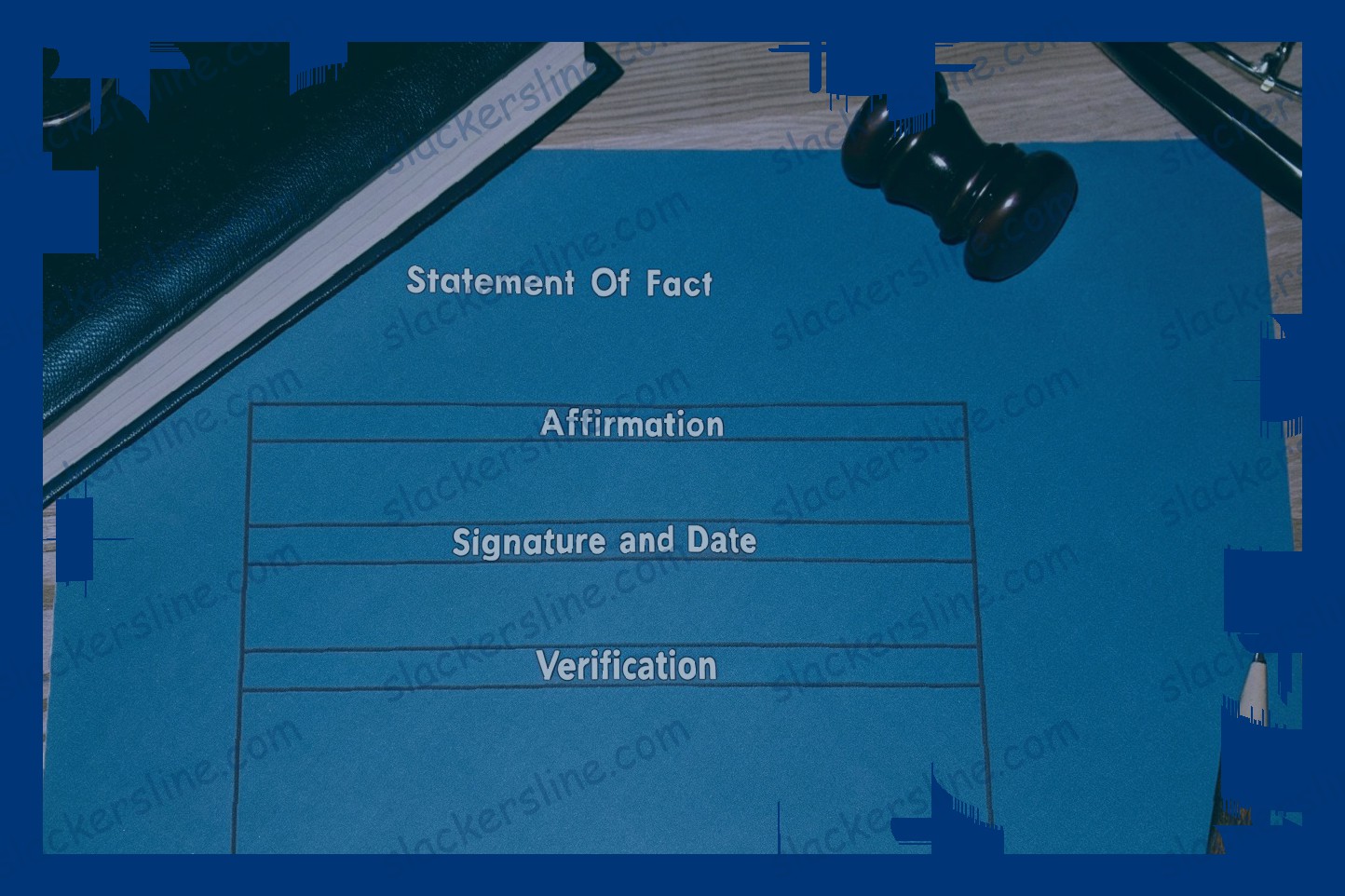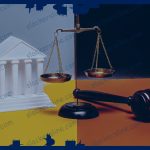What is a legal declaration?
A declaration is a statement made by a person which is "cause to be true" and it becomes a legal declaration by signing it in front of a Notary Public. Generally, a legal declaration is made under penalty of perjury. This means, if someone lies in a legal declaration and gets caught , they can go to jail.
A legal declaration could be about any number of issues. For example: Someone might declare their intention to marry again; or it could be to declare that Arnold Schwarzenegger actually was not married to Maria Shriver; or it could be a declaration about testimony that is to be given at trial. Sometimes, a legal declaration might be a simple statement of fact, such as "I declare that I own the property located at 123 Main Street" (most often to prevent the lender from getting sued for unintentional property with a missing or lost deed).

The structure of a legal declaration
While formats for legal declarations can vary widely, the following components are typically required: Statement of Fact. A legal declaration sets forth statements of fact made under penalty of perjury and must separately identify each fact contained in the declaration. Affirmation. The declarant should affirm the truthfulness of the statements in the declaration. Signature and Date. A declaration should be signed and will generally also include the date on which it was signed. Verification. A verification is a signature in front of an authorized official such as a notary public and is a necessary precursor to the submission of a declaration.
Legal declaration templates and formats
Legal declarations can be made in a number of formats, depending on the preferences of the legal system, the requirements in individual courts and the nature of the case. Typically though, declarations include the signature of the declarant, the date of the declaration, an introduction of the declarant, an explanation of the purpose of the declaration and information about the relationship of the declarant to the subject of the declaration.
Commonly, court orders stipulate that the declaration be in a specific format. Declarants should follow the instructions given on the template form for the specific format requirements of their legal jurisdiction. For example, the Superior Court of San Diego in California has its own form for declarations in support of family law motions and orders.
Some cases may require that declarations follow the Federal Rules of Civil Procedure (FRCP). The FRCP is a federal law that sets standards for US civil court processes. Parts 44-60 of the FRCP set out the requirements for declarations, testimony and affidavits. Part 44 subsection 1746 (2) states that the following format is acceptable:
"In lieu of the oath or affirmation required by section 1744 of Title 28 U.S.C., a matter to be proved by the testimony of a witness who is not a party to the action in any . . . court of the United States . . . may, with like force and effect as if made under oath or affirmation, be supported by an unsworn declaration executed in the following form: ‘I declare (or certify, verify, or state) under penalty of perjury under the laws of the United States of America that the foregoing is true and correct. Executed on (date). Signed (signature of decla
The FRCP then states that following requirements must be met in order for the declaration to be acceptable:
Section (1): The declaration must be in writing.
Section (2): The declaration must be signed.
Section (3): The declaration must be under penalty of perjury.
Section (4): The declaration must be in the following format:
(a) Include the name of the declarant
(b) Be dated
(c) Clearly state the relationship of the declarant to the matter being discussed.
(d) Clearly identify the declarant’s knowledge about the matter being discussed.
Responsibility for ensuring any specific formats are followed lies with the party preparing the declaration.
Legal declarations and affidavits: What’s the difference?
When a declaration is made, it is common for the person witnessing the declaration to also identify the matter for which the declaration is being made and then immediately "swear" that the statements are true. It is not necessary to be "sworn in", you can simply state that you declare the truth of the statements. That practice turns the declaration into an "affidavit". One legal difference between these documents is that if someone signs an affidavit but does not have first hand knowledge of the facts and do not personally declare the facts to be true and accurate, then that person has committed a crime. As a general rule, the maker of a declaration must have personal knowledge of the facts declared to be true:
Blanks v. 7-Eleven, Inc. (2017) 237 Cal.App.4th 778, 794
However, in some situations, an affidavit is actually more acceptable than a declaration, depending on the legal purpose. In some cases the court prefers the formalities associated with an affidavit instead of those associated with a declaration. The only difference is the "swearing" of the declaration, or the "oath". Many people object to being "sworn in", so a declaration is often easier to obtain. However, if you do not represent yourself and the judge of your case has asked you to file an affidavit, you will want to comply with that request.
How to write a legal declaration
Taking all of that into consideration, you should prepare a declaration consistent with what the other side’s expert has provided so that the evidence is consistent. Your declaration will have, at a minimum, the following parts:
- Your background – i.e., What is your basis for knowledge of this case? Could it be from reviewing the documents, attending meetings, etc.
- Discussion/analysis of the matter at issue – this should be consistent with what has already been put into evidence. For example, if the other side’s declaration states, "After consideration of the past 6 years of pay history, I believe the amount/year Joyce Matthews paid was incorrect." Your declaration should state, "I have reviewed Joyce’s pay history from the past 6 years. My conclusions are consistent with those made by Mr. Flores." If you can provide mathematical calculations or charts you can attach them as an exhibit.
- Conclusion/further work required – in most cases you will not have a conclusion to what took place. At the end of your declaration, you can state something like, "My conclusions are based upon my review of the documents and work performed to date . Additional work is required to complete my analysis and make recommendations to counsel."
When preparing a declaration, pay close attention to how written. In many instances, the person being deposed underestimates the importance of a signed declaration.
One issue that comes up from time to time is with the language used. For example, if the declaration is being prepared for an employment matter, you want to avoid specific words that have special meaning and are often relied upon in employment matters. For instance, using the term "lost wages" often has special legal meaning in an employment context.
When preparing a declaration, it is important to make sure it complies with legal standards. Generally speaking, declarations are attested to under penalty of perjury. This means you are signing under penalty of perjury under the laws of your state the information set forth in the declaration is true. In California, you must sign under penalty of perjury to comply with California law. A violation of the penalty of perjury can result in legal sanctions against the individual who signed the declaration.
Common errors in legal declarations
The biggest mistake people make when drafting or reviewing a legal declaration is setting the necessary foundation. I can’t tell you how many times I have reviewed declarations for clients where the declarant didn’t sign the declaration under penalty of perjury, or where the declarant did not know or was unsure of what facts were true, not he/she "thought" the facts were true. Every judicial officer in California expects (and demands) that declarations are made under penalty of perjury.
Another common mistake is failing to provide sufficient facts. This can range from not adequately recounting the history of a particular relationship between the parties to not including evidence of disputed issues. The worst part of these types of mistakes is that the declaration does not give the judge a complete picture to work with, which can end up causing more hearings than necessary.
A lesser, but still important mistake is assuming that the judicial officer will wait for the parties to supplement their declaration with additional facts or evidence. The reality is that judicial officers do not wait. In fact, if you try to supplement your evidence at the hearing without sufficient good cause, your declaration will be excluded from consideration.
Legal declarations in real life: Sample declaration
To further clarify the various roles a legal declaration plays in the legal process, we now turn to a real-world example from California. Let’s say that you are in an automobile collision and break your arm. You make an appointment with an orthopedic surgeon who confirms that you broke your arm. The insurer for the other driver (the defendant) denies coverage based on the theory that you either broke your arm in a previous accident or that you have some pre-existing condition. You make and keep your appointment with the orthopedic surgeon and obtain a signed, written declaration of your condition. That declaration states that you were examined on (date), and that the doctor reviewed x-rays (provided that the doctor indeed did review the x-rays). The doctor also notes that the fracture "is – or is not – the result of the subject accident." You provide the declaration to the defendant insurance company and they still deny coverage for your orthopedic treatment. The case goes to trial and, on the second day of trial, you testify that you injured your arm in the collision and were under the impression that the other driver’s insurance company was going to pay for your orthopedic care. You are asked by your attorney if you broke your arm in a previous accident. You respond that "I don’t remember." Your attorney then provides the defense attorney with the declaration signed by the medical doctor to impeach you and to show that your memory was defective at the time of your testimony.
In this scenario, the declaration executed before trial is used to support the truthfulness of your new testimony in court. The declaration is produced pre-trial to show that you are telling the truth. If the declaration was written in favor of the defendant or if you signed it only after trial (which is not usually after-trial practice), it could be used to contradict your testimony. In using the declaration, your attorney can now say to you, "Based upon the signed declaration we have a month ago, you stated that you did not break your arm at any other time. This is not consistent with your testimony today." The point being that the declaration prepared before trial was useful both ways—in support of your new testimony and then, once undermined, to show you to be untruthful. Either way, that declaration was significant in discovering the truth and assisting in your final victory.
Conclusion: The importance of a well-written legal declaration
”This comprehensive example of a legal declaration should give you some insight into the importance of carefully crafting a legal declaration to support your case. In this article I have covered the most important elements for declarations in support of court motions or declarations supporting or opposing the appointment of a conservator of the person or estate. A conservatorship means the person who has capacity to manage his or her money and business affairs or manage his/her personal care is capable of doing so even though that person is unable to make decisions about those matters or does not want to handle those responsibilities. A legal declaration in support of a court motion can go a long way in convincing the judge to grant the motion. The information that is provided in this declaration when reviewed by the Judge will tell the Judge whether or not the requested relief should be granted, denied, or if the Judge needs additional information to make a decision . The information contained in the legal declaration should be relevant to the issues raised by the Judge in the motion or petition. An experienced conservatorship attorney would know what to include or not to include in a conservatorship declaration to ensure that all relevant facts are considered by the Judge when deciding whether to grant the relief or order the Court is requested in the motion. The clearer and the more succinct the evidence or arguments presented in the legal declaration in support of the motion, the more helpful it will be to the Judge in rendering a decision on the issues presented in the legal motion. Rather, a legal declaration that is poorly written and presents a large amount of information that is confusing and irrelevant would not assist the Judge in reaching a decision on the issues covered in the motion. A legal declaration that supports your position on the motion or petition is very important and may assist the court in granting the relief you seek.

